
NOW Articles Written By Members
An Argument for Collecting Half Dollars
Late Night and a Russian Type Set
Old Country Coins: Newfoundland’s Rarest 5-Cent
Milwaukee Medals: Fifth Ward Constable
A look back at a common, but classic commemorative – Wisconsin’s Territorial Centennial
A side-tracked story: Mardi Gras Doubloons
A look back at a collecting specialty – the O.P.A. ration tokens of WWII
Bullion And Coin Tax Exemption – Act Now!
Is There A Twenty Cent Piece We Can Add To A Collection
Capped Bust Half Dollars: A Numismatic Legacy
U.S. Innovation Dollars: Our Most Under-Collected Coin?
My 2023 ANA Summer Seminar Adventure
>> More articles in the Archive
For more NOW Articles Written By Members,
Rahr Brewing Of Wisconsin... and beyond
by Jeff Reichenberger #1933
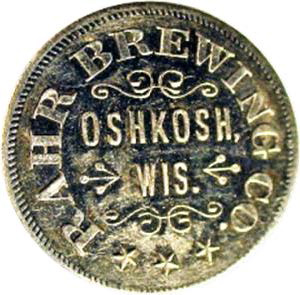
The year 1956 was effectively the end of ninety-one years of Rahr family brewing in Oshkosh, WI. The brewery closed its doors in the summer of that year, ending Oshkosh’s longest running family-owned brewery. In the years that followed, equipment was sold off and the once state-of-the-art brewing facility became deteriorated and vacant. In 1964 the building was razed.
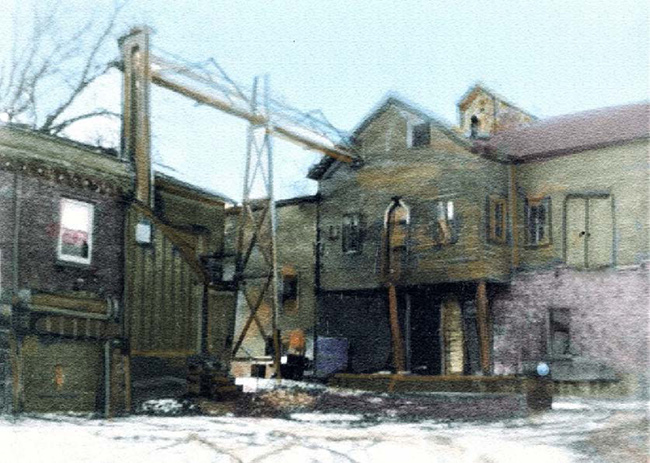
Rahr Brewery Oshkosh as it looked shortly before it was razed in 1964.
In this article, we will look back to better days of the Rahr Breweries of Wisconsin. The Rahr family had been involved in beer and vinegar production since the early 1800’s in Wesel, Prussia. There, a young Wilhelm Peter Mathias Rahr learned the craft from his ancestors, and he brought his knowledge with him when the promise of America called.
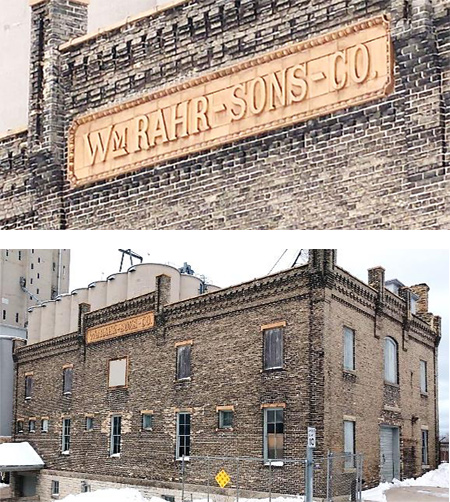
This portion of William Rahr's
Eagle Brewery still exists in Manitowoc.
Manitowoc
Wilhelm Rahr arrived in Manitowoc, Wisconsin in 1847 and quickly built a brewery. It began as a lager brewery, one of the first and most successful lagers in Wisconsin. Wilhelm Americanized his name and William Rahr’s Eagle Brewery was born, he also pioneered the malting process that would eventually overtake beer making in financial profits.
News of Wilhelm’s success trickled across the world and landed square into the consciousness of his young nephews, Henry, Charles, and August. They had learned brewing in Prussia and hearing of Wilhelm sparked their collective desire to travel to America. In 1853, they joined Wilhelm in Manitowoc and began working at the Eagle Brewery. There were new barleys, new hops, new malting processes that the brothers needed to adapt to in America. Their Uncle provided them with the training facility to do just that.
Green Bay
Both Henry and Charles moved to Green Bay near the end of the 1850’s. Charles then hired himself out as a brewer in Iowa, while Henry launched his own brewing venture in the Green Bay area, the Bellevue Brewery. Charles returned after an eighteen-month period and joined Henry at his brewery. Henry had a partner in the brewery, A. Hochgreve. Mr. Hochgreve’s sister, Caroline would soon be infatuated with Charles and the young couple became inseparable.
Then in 1861 the civil war broke out and Charles enlisted in the 9th Wisconsin Volunteer Infantry. The regiment engaged in raids throughout Kansas and Oklahoma in which they took heavy casualties. Charles was wounded in the back but healed and survived the war. He returned to Green Bay where Caroline waited, and they were married on January 1st, 1865.
Charles longed to open his own brewery, so he and Caroline traveled 55 miles north, where Wisconsin’s second largest city sat on the shores of the Fox River and Lake Winnebago.
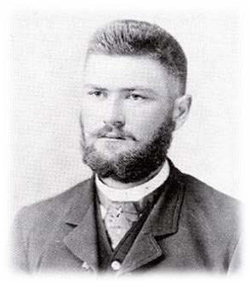
Charles Rahr
Oshkosh
By 1865, when Charles and Caroline moved to Oshkosh, it had become a German home away from home. German immigrants had been settling in Oshkosh for a significant number of years by then, more than doubling the city’s population. The hard-working immigrants had a great love of beer, and Oshkosh already had several breweries servicing them.
Charles surmised that the town could support another brewery, and so, opened his own. His brother August also joined him in the venture, while Caroline was about to give birth to their first child. The ‘City Brewery’ of ‘Charles Rahr & Brother’ was located on five acres on Lake Winnebago just east of the outskirts of city progress. The City Brewery was larger than the breweries already established in Oshkosh offering a significantly larger barrel capacity. The plant consisted of five wood-framed, white buildings. The brewhouse was built around a gravity-fed system that automated the liquid transfer process. Water was pumped to elevated tanks by windmill and flowed into the beer making kettles below. Then the cooking of the mash, the hops, the wort, the cooling, and the fermenting of the lager yeast.
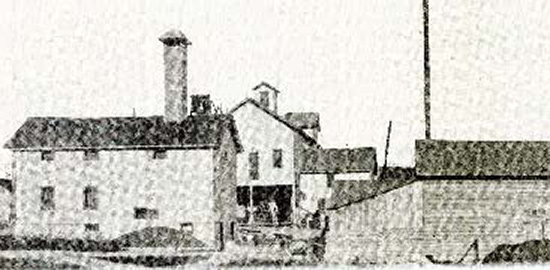
Early photo of Rahr's City Brewery, Oshkosh
The total process to produce a keg of beer from start to finish took approximately 6 weeks, then Charles introduced a second fermentation known as krausening, then if to Charles satisfaction, the beer was ready for market. The Rahr brand grew popular, and the City Brewery became the top beer seller in the city. The Rahrs enjoyed slow and steady growth that would sustain them through an onslaught of competitors throughout the years.
Charlie Rahr
Charles Rahr, Jr. was literally born into the brewery business December of 1865, just as the City Brewery operations were under way. Known as ‘Charlie’ in the brewery yard, by 1876 he would have six siblings, all sisters. The Rahrs lived in a small home on the brewery grounds. Early on, several workers lived in the brewery and adjacent to the lot. Prussian immigrants took up residence near and around the brewery property and many were employed by the Rahrs. It became a real neighborhood operation.
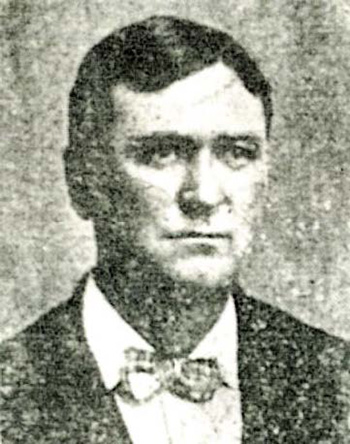
Charles Rahr
By the 1880’s, the brewing industry was in a state of rapid growth, with size and output ruling the day. The heavy-hitting brewers from Milwaukee had been expanding and moved in on the hometown brewer’s territory. Competition was stiff. Tough decisions were in the making for the Rahr family. Father Charles advocated to stay the course, keep making the product the old-world way, while the pressure was on to modernize. While Charles was now considered a pioneer in beer making, his son Charlie was the heir apparent to keep pace with the rest of the industry. Charlie had been working full-time in the brewhouse since he was fifteen and by 1886, he was named brewmaster of the City Brewery. In his first year in that role, the brewery doubled its output. Charlie was determined to modernize the Rahr brand.
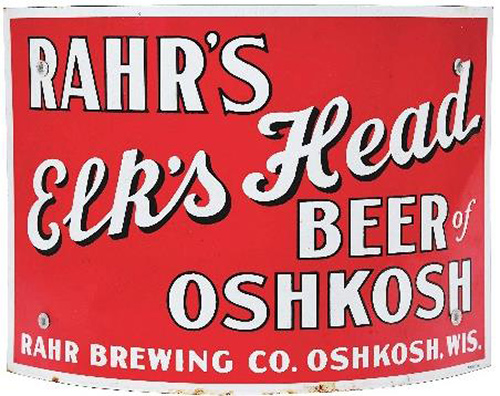
Charles Rahr and son managed to navigate through the early part of the 1890’s despite the industrial beer movement, several smaller Oshkosh breweries merger, and the nationwide economic crisis of 1893. By the end of 1896, it was time once again to improve capacity. In preparation of the coming new century, they began construction of a state-of-the-art three-story brewhouse. Gone were all the wooden implements, replaced with steel and copper. They were able to double their capacity with plenty of room for future expansion. In the years that followed, Charles put the brewery in Charlie’s name and gradually the City Brewery became known as Rahr & Son, until 1905 when it was officially retitled the Rahr Brewing Company.
Charles Rahr officially retired in 1908 and Charlie did not let up on his ideas of expansion. Between 1908 and 1911 the brewery was torn down and rebuilt building by building, wood frame replaced by brick, brewhouse again expanded, until it was a truly modern brick brewing complex. The cost was substantial, but Charlie was willing to take risks to keep up with the competition, and the risks paid off. By the winter of 1911, the Rahr Brewing Company sold nearly 6000 barrels of beer, twice the company’s previous best. Financial doubling would be the norm for the following decade. Son Charlie’s success was unquestionable.
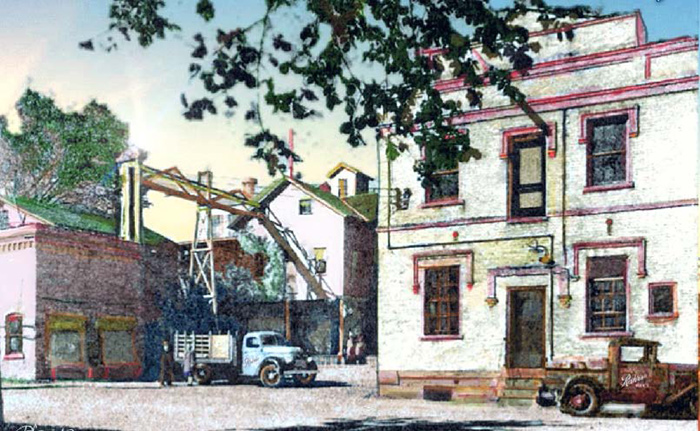
Rahr Brewing Company, Oshkosh. Circa 1920 – 30’s
Advertising
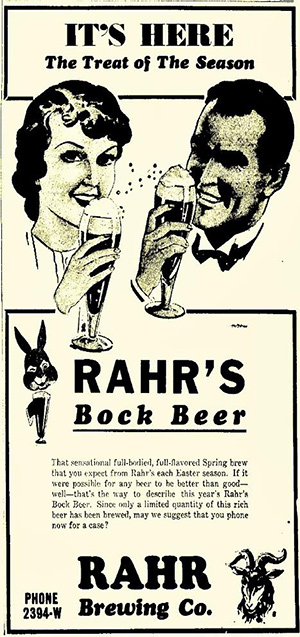
Up to the time of Charlie’s assent, there had not been a great deal of advertising to promote the Rahr brand, but Charlie realized the necessity of advertising as competition from other local breweries and Milwaukee closed in. While Oshkosh residents continued to be strong supporters of the small local brewers, the larger companies of Milwaukee, with their mass production and distribution capabilities, increased their share of the market. Previously, advertising consisted of word-of-mouth and saloon chatter, with a yearly announcement of the annual Bock beer release.
Now Rahr’s began to hit the newspapers with regular ads appealing to local patrons with words like, “people who know and appreciate an absolutely pure, old-fashioned brew”, and Rahr’s Special Brew with “unsurpassed taste”, and the rudimentarily clean slogan, “Rahr Beer is Good Beer”. These advertising campaigns were extremely successful in keeping a strong local bond and holding back the ‘big boys’ from Milwaukee. ‘Tied Houses’ were another way to entrench the brewery into the local beer drinking community. A ‘Tied House’ was simply a saloon that was backed by a brewery. The saloon was ‘tied’ to a particular brewery and therefore sold only that brewery’s product. Rahr’s was a strong advocate of the practice. Saloon keepers benefitted from the popularity of the brand, and the brewery was able to keep rivals from penetrating their territory.
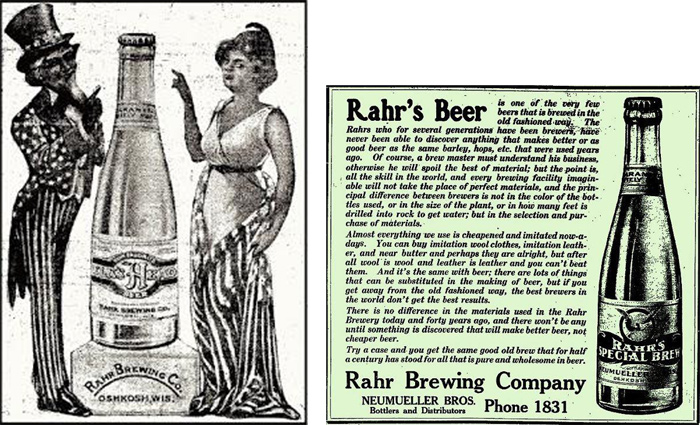
Newspaper advertising helped Rahr's compete with rival brewers.
Rahr Token
One of Rahr’s advertising ideas that was relatively unique among brewery promotionswas this aluminum trade token. The Obverse reads; RAHR’S BREWING CO. / OSHKOSH, WIS. The Reverse reads; GOOD FOR / 50c WITH 1/8 / BEER KEG.
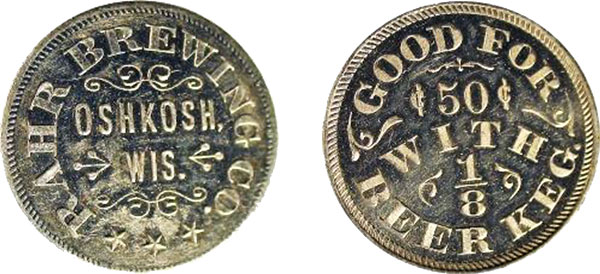
The actual size of the token is 32mm and the fields are almost proof-like, with amirrored surface. Aluminum tokens were popularized at the World’s Fair Columbian Exposition in Chicago in 1892 and 1893. They were used until about 1950 when plastictook over as the go-to material for trade tokens. All sorts of businesses used these aspromotional items; however, it was uncommon for a brewery to use them. These RahrBrewery tokens were probably produced between 1900 and 1920 prior to prohibition.
Today’s barrel of beer contains 31 gallons. Historically, the term keg referred to a largervessel than a barrel. A 1/8 keg of beer is equivalent to today’s half-barrel, orapproximately 15.5 gallons. In 1900 a barrel of beer averaged $8.00; thus, an eighth kegwas around $4.00. A patron who possessed one of these tokens, therefore, could get aneighth keg for $3.50, at approximately a 12.5% discount, which was a good deal. Aneighth keg would seem to be a lot for a single consumer, so I would speculate that thesetokens were meant for merchants to redeem.
At one time this Rahr token was considered very scarce, if not rare. In the late 1990’s, ifone turned up on eBay it would sell for hundreds of dollars. Then, suddenly, within ayear, there were dozens of them available – a classic case of a small hoard release.
Today, when they turn up, they are typically priced in the 50-dollar range.
Prohibition/Later years
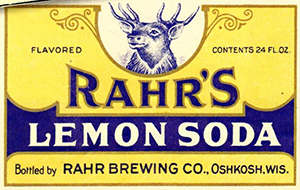
With the legislation of prohibition in January of 1919, the Rahr Brewery, in essence ceased all production. The economic effect was devastating for the company, but they changed direction. To survive, they began to make soda. Nowhere near the profits of producing beer, but the aim was to keep the company solvent. Unfortunately, the company’s net worth fell by nearly two-thirds during the prohibition years and crawling out of the great depression took its toll.
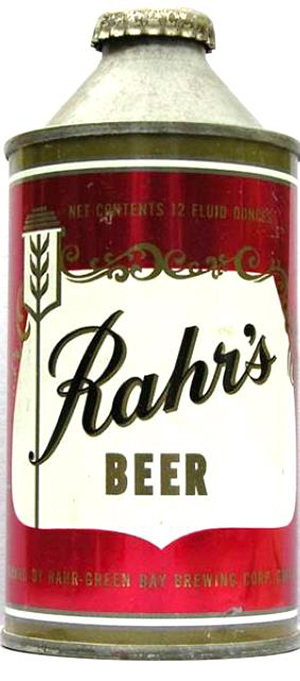
By the end of 1933, beer was again legal to produce and Rahr’s fired up the first batch of lager to an enthusiastic patronage. But America had changed. Old-world craftsmanship didn’t carry the weight it once had for consumers. Fast-produced, less expensive products ruled the day. This trend would continue well into the 1950’s and Rahr’s market share decreased yearly. In the spring of 1956, Rahr’s finally closed the doors for good. It had been a 91-year run, a testament to ingenuity and perseverance.
Ironically, Rahr’s methods would be considered fashionable today. They would be categorized as a craft brewer. The Brewers Association® defines a craft brewer as a small and independent brewer. There are six distinct craft beer industry market segments: microbreweries, brewpubs, taproom pubs, regional breweries, contract brewing companies and alternating proprietors.
By any of these market segment parameters, it can be speculated with confidence that the Rahr brewing tradition would likely be successful.
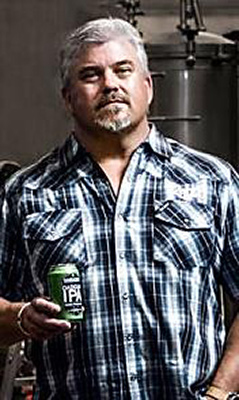
Fritz Rahr
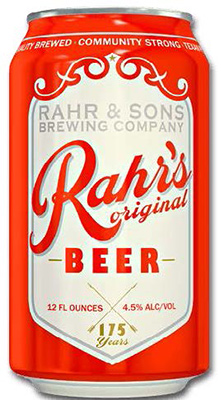
Enter Fritz
In 2004, the Rahr Brewing tradition had a new birth beyond Wisconsin. The great-great-grandson of Wilhelm Rahr, Frederick ‘Fritz’ Rahr, established Rahr & Sons Brewing Company of Fort Worth, Texas. Recently, they began distributing the new product in Wisconsin!
The ‘new’ Rahr brews his beer differently than his ancestors, but the name lives on in the beer brewing industry.
Sources
The primary sources for this article were two books;
“The Breweries of Oshkosh, their rise and fall”, by Ron Akin and Lee Reiherzer (2012 privately published).
“Winnebago County Beer, a heady history” by Lee Reiherzer (2019 published by American Palate).
Any imagery and/or verbiage gleaned from their pages were used with permission.
Other sources include:
The Oshkosh Public Library
The Oshkosh Public Library / Digital Collections
oshkoshpubliclibrary.org
oshkoshbeer.blogspot.com
rahrbrewing.com
dmagazine.com
Tom Casper / email correspondence
Larry Spanbauer / personal conversations
Have an interesting numismatic topic you’d like to share with your fellow NOW members?
Send your article to evan.pretzer@protonmail.com today!!!